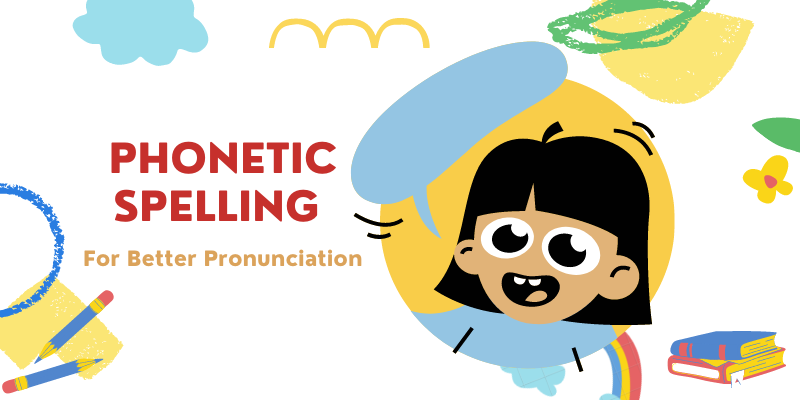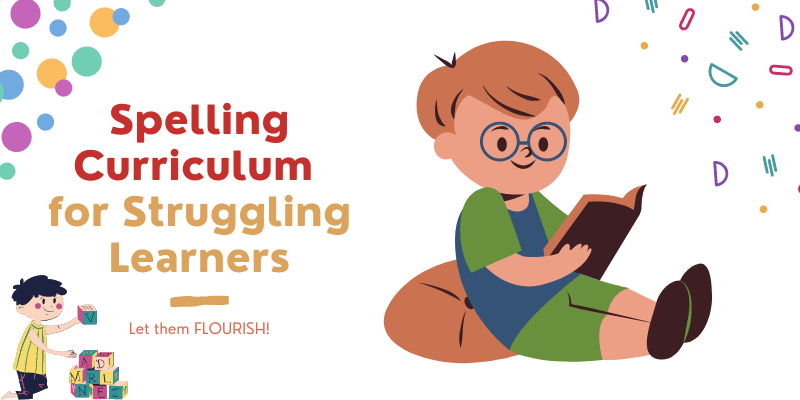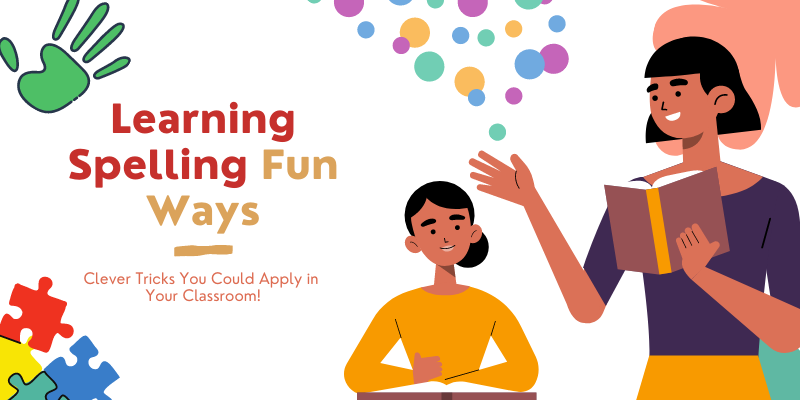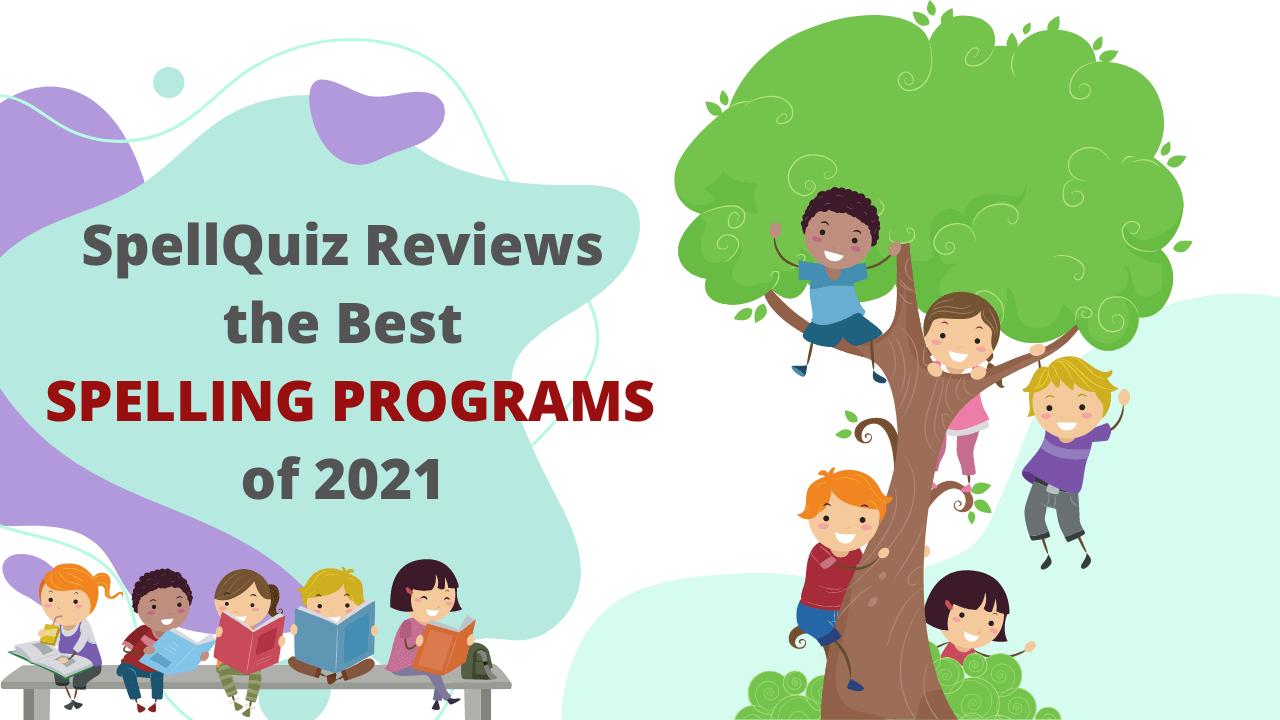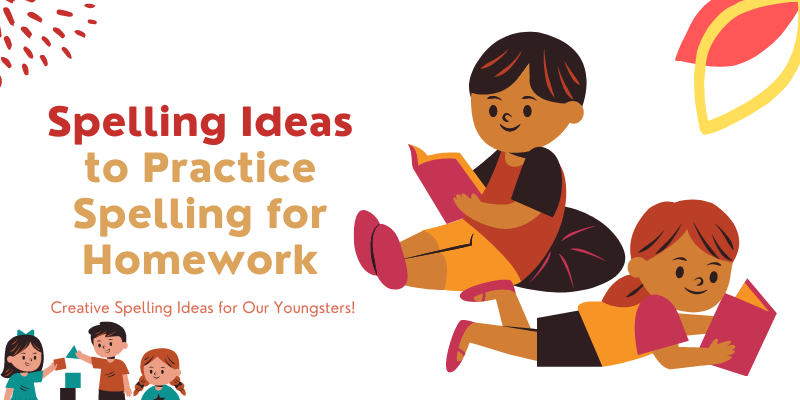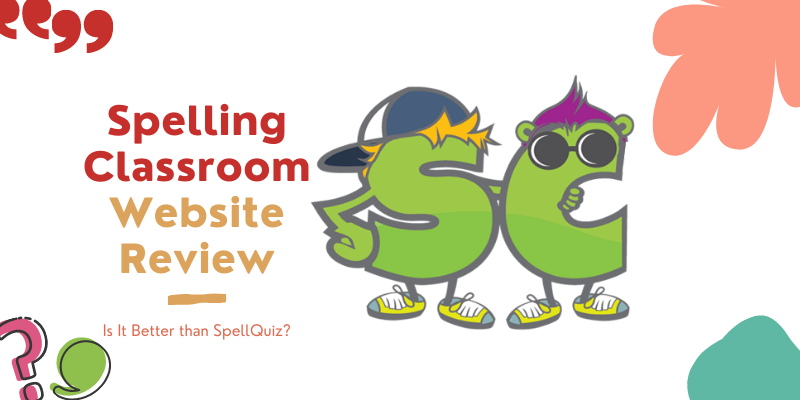Spelling means forming a word with letters according to established rules. Normally, what we understand by spelling is to know which letters to use and in which pattern while writing a word. But phonetic spelling serves us a bit more than that. It teaches us how to pronounce a word!
For a person who’s learning a new language, or struggling with name pronunciation, Phonetic spelling is invaluable. In this article, you’ll find out more about how to use this method to improve not only your spelling skill, but your speaking and listening skill too.
Phonetic Spelling Definition
Let’s start with the basics. What is Phonetic Spelling? It is a device for pronunciation that requires writing out words according to how each syllable is spoken. In simple terms, phonetic spelling is a way to spell a word the way it sounds.
In phonetic spelling method, each sound is assigned at least one letter or a combination of letters. But there are cases where a letter or a combination of letters sounds differently or same sound is spelled differently. Phonetic spelling comes handy in these cases.
Consider the word ‘Paper’. The letter ‘P’ is assigned the sound /p/. But if ‘P’ is paired with ‘H’, for example in ‘Photo’, ‘ph’ sounds like /f/.
Similarly, ‘T’ in ‘Table’ is assigned the sound /t/. But when pairing with h, such as in ‘This’, it creates a new sound. But again, ‘th’ in ‘this’ and ‘th’ in ‘thin’ makes different sound. It is difficult to know about the difference if you’re learning the word by reading.
Now, think about the word ‘Potato’. You might be considering to pronounce it as ‘po-ta-to’ but the word is actually pronounced ‘puh-tei-tow’.
Similarly, according to phonetic spelling, ‘banana’ should be ‘buh-nAn-uh’. This spelling tells you to emphasize on the A in the middle of the word which couldn’t be known from traditional spelling.
How is Phonetic Spelling Useful?
English is not an easy language. There are many rules and patterns of spelling and the same amount of exceptions of those rules. A common problem we all face is that the spelling of a word is often different from how it sounds which makes both speaking and writing complicated.
But How does Phonetic Spelling Help in This Situation?
Here are some cases for you to understand better:
- In cases of public speaking, such as giving speeches, news reading, announcing names at graduation ceremonies or sports events, phonetic spelling is of great help.
- It is a sound-based guide for pronunciation that is especially helpful for uncommon terms such as medical or engineering terminology, culinary terms etc.
- The International Phonetic Alphabet (IPA) provides symbols for different sounds that are common for all languages. So if you are learning a new language beside your native one, it would help you in many extent.
- Phonetic spelling is easy to use for all levels of learners.
- Kindergarten students find it easy to spell words with phonetic spelling. For example: ‘Bat’ sounds exactly how it’s spelled.
- ESL students can break down the words into their sounds to learn the words.
- If you are a native speaker or in an advance level, try this method to improve your fluency and vocabulary.
- Along with learning to pronounce better, you get a clearer idea about the speaking style of a language. That way, you can improve your speaking skill while learning a new language.
- Phonetic spelling helps you with your listening skill too. You would have a better idea about accents and will be able to understand speeches better. This particular skill comes handy in listening tests.
For example, let’s consider you are using SpellQuiz Spelling Test to test your spelling skill. In this test, you have to spell the words you are hearing. So if you know how the word sounds and which accent the speaker is using, you’ll have no problem answering and will level up in no time!
The phonetic stage of spelling development is a very important stage for any new learner. Check out our additional article on the topic!
Phonetic Spelling Alphabet
The International Phonetic Alphabet (IPA) is a system where each sound in English language is assigned a symbol. You can learn how to pronounce a certain word in English appropriately using this method.
Here are some examples of the alphabets:
Short Vowels
|
IPA Symbol |
Word examples |
|
e |
Bent, gentlemen, ten, better. |
|
æ |
Cat, and, cap, fat, have. |
|
ʌ |
Run, love, honey, one, come, gone |
|
ʊ |
Put, Book, could, nook, would, mood, boot |
|
ɒ |
Cob, pop, match, squat, sausage. |
|
ə |
Alive, again, mother. |
Long Vowels
|
IPA Symbol |
Word examples |
|
i: |
Free, neat, beam, team |
|
ɜ: |
Curse, heard, bird, burn. |
|
ɔ: |
Talk, paw, bored, dawn, jaw. |
|
u: |
Few, boot, lose, gloomy, fruit, chew. |
|
ɑ: |
Fast, car, hard, bath. |
Diphthong Vowels
|
IPA Symbol |
Word examples |
|
ɪə |
Near, ear, clear, tear, beer, fear |
|
eə |
Hair, there, care, stairs, pear |
|
eɪ |
Face, space, rain , case, eight |
|
ɔɪ |
Joy, employ, toy, coil, oyster. |
|
aɪ |
My, sight, pride, kind, flight |
|
əʊ |
No, don’t, stones, alone, hole |
|
aʊ |
Mouth, house, brown, cow, out |
Fricative Consonants
|
IPA Symbol |
Word examples |
|
f |
Full, Friday, fish, knife. |
|
v |
Vest, village, view, cave. |
|
θ |
Thought, think, Bath. |
|
ð |
There, those, brothers, others. |
|
Zoo, crazy, lazy, zigzag, nose. |
|
|
ʃ |
Shirt, rush, shop, cash. |
|
ʒ |
Television, delusion, casual |
|
h |
High, help, hello. |
Plosive Consonants
|
IPA Symbol |
Word examples |
|
p |
Pin, cap, purpose, pause. |
|
b |
Bag, bubble, build, robe. |
|
t |
Time, train, tow, late. |
|
d |
Door, day, drive, down, feed. |
|
k |
Cash, quick, cricket, sock. |
|
g |
Girl, green, grass, flag. |
Affricate Consonants
|
IPA Symbol |
Word examples |
|
ʈʃ |
Choose, cheese, church, watch. |
|
dʒ |
Joy, juggle, juice, stage. |
Nasal Consonants
|
IPA Symbol |
Word examples |
|
m |
Room, mother, mad, more. |
|
n |
Now, nobody, knew, turn. |
|
ŋ |
King, thing, song, swimming. |
Approximant Consonants
|
IPA Symbol |
Word examples |
|
r |
Road, roses, river, ring, ride. |
|
j |
Yellow, usual, tune, yesterday, yard. |
|
w |
Wall, walk, wine, world. |
|
l and ɫ |
Law, lots, leap, long, pill, cold, chill, melt. |
Many adults deal with difficulties related to spelling. Learn more about spelling difficulties in adults now!
Phonetic Spelling Chart
Phonetic spelling charts are immensely helpful for teaching and personal use. You can make your own using these simple steps:
- Find out the sounds in your language. For example, British English Speech has 44 sounds.
- Find out the IPA symbols of those sound.
- Write them in one column and exemplary words in another.
- You can hang this chart in your class to teach the student or near your desk for quick reference.
Below you can find the list of phonetic symbols used for sounds in English Language. There are also words as example included. They are divided based on vowel and consonant.
Phonetic Spelling Chart: Consonant
|
Phonetic Symbol for Consonant Sound |
Sounds Like |
IPA Symbol |
|
B |
bone, bulb |
/b/ |
|
Ch |
chicken, picture |
/tʃ/ |
|
D |
dodge, forbid |
/d/ |
|
Dh |
author, then |
/ð/ |
|
F |
feather, tough, ruffle |
/f/ |
|
G |
green, beg, egg |
/ɡ/ |
|
H |
hint, redhead |
/h/ |
|
J |
jam, gentle, ledger |
/dʒ/ |
|
K |
cot, kettle, skip, pickle |
/h/ |
|
Kh |
loch, Hanukah |
/x/ |
Phonetic Spelling Chart: Vowel
|
Phonetic Symbol for Vowel Sound |
Sounds Like |
IPA Symbol |
|
A |
Cap, slap |
/æ/ |
|
ah or aa |
mother, father |
/ɑː/ |
|
Air |
spare, pair |
/ɛər/ |
|
ay or ai |
cape, bait |
/eɪ/ |
|
e or eh |
nest, blessings |
/ɛ/ |
|
ee |
Fleet, plead |
/i/ |
|
eer |
Pear, beer |
/ɪər/ |
Phonetic Spelling Dictionary
You might be wondering about how to use the phonetic symbols to learn words. Have you ever tried to google how to pronounce a word, or meaning of a word? They use the IPA symbols to teach the pronunciation.
There are dictionaries such as Oxford Learner’s Dictionary for Academic English or Oxford Advance Learners Dictionary which include the phonetic spelling of the word along with the traditional spelling and definition.
You may check out tophonetics which is a website that converts any text word given into the IPA phonetic transcription.
Also, easypronunciation gives you option to choose from American English and British English and offers phonetic spelling in both. This is a useful tool for you to understand the accents better. Macmillandictionary is an online dictionary that offers the same service.
Here are some examples of phonetic spelling for you to understand the use of phonetic symbols found in the phonetic spelling dictionaries:
Vowels
|
iː |
see |
/siː/ |
|
i |
happy |
/ˈhæpi/ |
|
ɪ |
sit |
/sɪt/ |
|
e |
bed |
/bed/ |
|
æ |
cat |
/kæt/ |
|
ɑː |
father |
/ˈfɑːðə(r)/ |
|
ɒ |
got |
/ɡɒt/ |
|
ɔː |
saw |
/sɔː/ |
|
ʊ |
put |
/pʊt/ |
|
u |
actual |
/ˈæktʃuəl/ |
|
uː |
too |
/tuː/ |
|
ʌ |
cup |
/kʌp/ |
|
ɜː |
fur |
/fɜː(r)/ |
|
ə |
about |
/əˈbaʊt/ |
|
eɪ |
say |
/seɪ/ |
|
əʊ |
go |
/ɡəʊ/ |
|
aɪ |
my |
/maɪ/ |
|
ɔɪ |
boy |
/bɔɪ/ |
|
aʊ |
now |
/naʊ/ |
|
ɪə |
near |
/nɪə(r)/ |
|
eə |
hair |
/heə(r)/ |
|
ʊə |
pure |
/pjʊə(r)/ |
There are also other ways a student can learn the pronunciation of every words. Check out our spelling through morphographs guide to learn more about it.
Consonants
|
p |
pen |
/pen/ |
|
b |
bad |
/bæd/ |
|
t |
tea |
/tiː/ |
|
d |
did |
/dɪd/ |
|
k |
cat |
/kæt/ |
|
ɡ |
get |
/ɡet/ |
|
tʃ |
chain |
/tʃeɪn/ |
|
dʒ |
jam |
/dʒæm/ |
|
f |
fall |
/fɔːl/ |
|
v |
van |
/væn/ |
|
θ |
thin |
/θɪn/ |
|
ð |
this |
/ðɪs/ |
|
s |
see |
/siː/ |
|
z |
zoo |
/zuː/ |
|
ʃ |
shoe |
/ʃuː/ |
|
ʒ |
vision |
/ˈvɪʒn/ |
|
h |
hat |
/hæt/ |
|
m |
man |
/mæn/ |
|
n |
now |
/naʊ/ |
|
ŋ |
sing |
/sɪŋ/ |
|
l |
leg |
/leɡ/ |
|
r |
red |
/red/ |
|
j |
yes |
/jes/ |
|
w |
wet |
/wet/ |
More Examples
|
apple |
Ap-uhl |
/ˈæp.əl/ |
|
bottle |
bOt-l |
/ˈbɒ.təl/ |
|
diner |
dIn-uhr |
/ˈdɪnɚ/ |
|
eaten |
EEt-n |
/ˈitn̩/ |
|
fence |
fEnts |
/ˈfɛnts/ |
|
Hannah |
HAN-uh |
/hˈanə/ |
|
John |
Jon |
/dʒˈɒn/ |
|
puppy |
PUH·pee |
/ˈpʌpi/ |
|
Sarah |
sehr-uh |
/sˈɑːɹə/ |
Now that you have got a basic idea about how phonetic spelling works and how it might be useful to you, explore it more to strengthen your pronunciation skill. Don’t forget to maintain a notebook for what you have learn and review them once in a while. Check SpellQuiz Vocabulary test to assess your vocabulary range. You can also check out SpellQuiz’s Spelling Bee Online (SBO) test to check out your true spelling potential. Good Luck!
